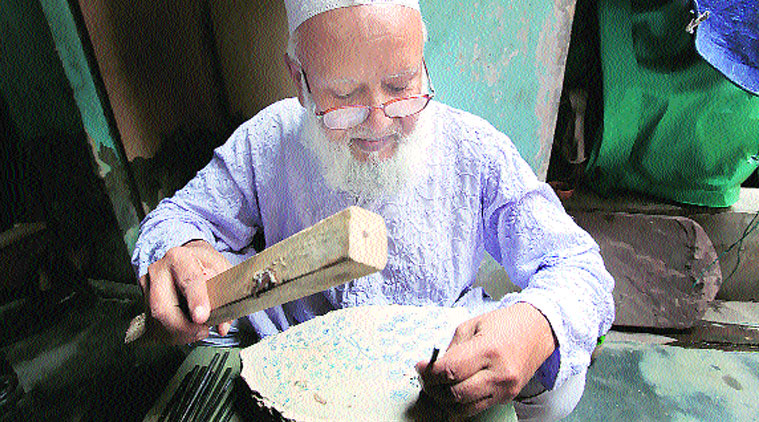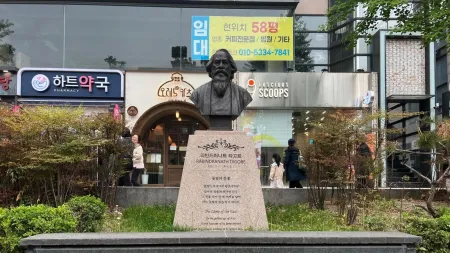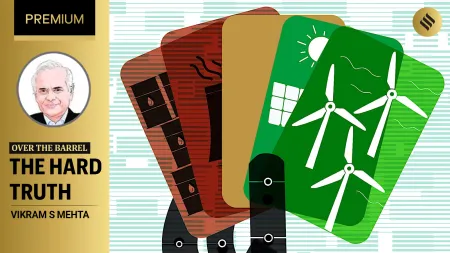- India
- International
With Wood Intentions: Mohammad Ayyub carves calligraphy on wooden blocks
Mohammad Ayyub carves calligraphy on wooden blocks, remodelling an ancient craft.
 Mohammad Ayyub at work on a block of wood. (Source: Express photo by Mohammad Ayyub at work on a block of wood)
Mohammad Ayyub at work on a block of wood. (Source: Express photo by Mohammad Ayyub at work on a block of wood)
Qazi dekha, mulla dekha
Pandit dekha chhal ka
Auron ko baikunth batave
Aap narak me sarka
While the 15th-century poet Kabir wrote these lines in Braj, Mohammad Ayyub writes or rather carves them in Arabic on wooden blocks. The 70-year-old has done several experiments in calligraphy, besides engraving the ayats (religious lines), which is what traditional calligraphy largely constituted. He has carved the names of leaders like Jawaharlal Nehru and Gandhi, of sportsmen, and couplets from Kabir, alongwith lyrics of other ghazals. He has also carved letters of the English, Hindi, Urdu, Kannada and Tamil alphabet, apart from making traditional motifs on wooden blocks.
Ayyub has few calligraphy pieces to show in his house in Shaheen Bagh, but a file contains numerous motifs. Fluttering mynahs, parrots and peacocks, and galloping tigers carry hidden messages in Arabic. A small mynah with the message, ‘Trust in God’, costs about Rs 200, while a lion with names of cricketers and politicians hidden in it could cost up to Rs 800. “We use sheesham wood from Farrukhabad (in Uttar Pradesh). There are people who cut trees horizontally, the way we want, but then it’s very expensive,” says Jamila, his wife.
The surface has to be rubbed and smoothened, which is a long process. The pieces are left to dry for a year or two. The motifs are first drawn on the surface, before the final carving can begin. Large square blocks have several motifs carved on it, which are then cut into smaller blocks.
“But buyers for these blocks are rare. Koi jaankaar hi khareedna chahega (Only people who know about it, will buy it). Even our regular blocks with motifs for handmade fabric printing do not have too many buyers,” says Ayyub. Few businesses in handmade printing bring orders, but they sell mostly at exhibitions. “Yeh to ab bas shauk aur khandaan ka kam chalaane ki baat hai (Now it’s just about interest and about continuing the family legacy),” says Jamila, in her early 60s.

“There was a time when we spent Rs 800 and the whole house would be full of wood. Now even at Rs 2 lakh, we may just get about half of that quantity,” says Ayyub, who lives with his five sons. They know the skill but are into the furniture business and don’t seem inclined to continue the family tradition. “Yeh to bahut mushkil mamala hai (It’s very tough),” she says.
Ayyub is the fifth generation of calligraphers. He claims that wooden block craftsmen across the country have learnt the art from his forefathers.
It was a research scholar working with the Crafts Museum in Delhi who found him in Farrukhabad. After several invitations to showcase his work at exhibitions in Delhi, Ayyub moved to the city in the 1980s with his family. After a madrasa education till class VIII, he began working full time on blocks along with his father. “He is an exception, one of the rare craftsmen who are educated and knows how to read and write Arabic. While craftsmen are not educated, the educated never want to become craftsmen,” says Jamila.
Contact: 09811842454
May 08: Latest News
- 01
- 02
- 03
- 04
- 05






































